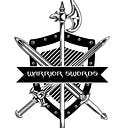Viking Swords: A Symbol of Power and Prestige

The Viking sword, a formidable weapon and a symbol of status, played a pivotal role in the Viking Age. Renowned for their exceptional craftsmanship and durability, these swords were not merely tools of war but also cultural artifacts that reflected the values and artistic expertise of the Viking people. Among the tales of heroism and conquest, Lesser-Known Viking Sword Legends reveal the mystique and cultural significance behind these iconic weapons.“The Viking sword, sharp and enduring, stood as a bridge between life and death, the earthly and the divine, and the past and future.”
Historical Context of Viking:
The Viking Age, spanning from the 8th to 11th centuries, was a period of significant expansion and cultural exchange in Europe. Viking warriors, renowned for their seafaring prowess and their fearsome reputation, carried these swords into battle, their presence a symbol of might and authority.
Characteristics of Viking Swords:

Viking swords were typically single-edged, double-edged, or sometimes had a slight curve towards the tip. They were generally around 80–90 centimeters long and weighed between 1–1.5 kilograms. The blades were often forged using pattern welding, a technique that involved layering different types of steel to create intricate patterns and enhance the sword’s strength.
The hilts of Viking swords were often decorated with intricate designs, including knotwork, animal motifs, and geometric patterns. These decorations were not just for aesthetic purposes but also served as symbols of status and personal identity.
Types of Viking Swords:

There were several types of Viking swords, each with its own unique characteristics:
- Ulfberht swords: These were high-quality swords made from imported steel, often bearing the inscription “ULFBERHT.” They were prized by Viking warriors for their superior quality and durability.
- Pattern-welded swords: As mentioned earlier, these swords were made using a technique that involved layering different types of steel to create intricate patterns.
- Seaxes: These were longer, single-edged knives that could also be used as weapons. They were often carried by Viking warriors as a secondary weapon.
The Role of Swords in Viking Culture:
Swords were more than just weapons to the Vikings. They were symbols of status, wealth, and personal identity. A warrior’s sword was often passed down through generations, becoming a family heirloom. Swords were also used in rituals and ceremonies, signifying the warrior’s commitment to his people and his gods. Additionally, how weapons and warfare shaped Norse society.”
This addition highlights the broader cultural and societal impacts of weaponry and warfare on the Vikings.
Conclusion of Viking Sword:
The Viking sword is a fascinating artifact that provides a glimpse into the culture and society of the Viking Age. These weapons were not only symbols of power and prestige but also works of art that reflected the skill and creativity of Viking craftsmen. The intricate designs and durable construction showcased their mastery in metallurgy. The legacy of the Viking sword continues to inspire historians, archaeologists, and enthusiasts around the world, shedding light on Norse culture and its influence.
Lesser-Known Viking Sword Legends: Among the overlooked tales is the Ulfberht sword, renowned for its advanced steel quality, and the legendary sword Skofnung, believed to hold mystical powers. These swords highlight the Viking age’s innovation and mythology.“The Viking sword was more than just a weapon; it was a symbol of power, prestige, and craftsmanship, cutting through both enemies and history.”
